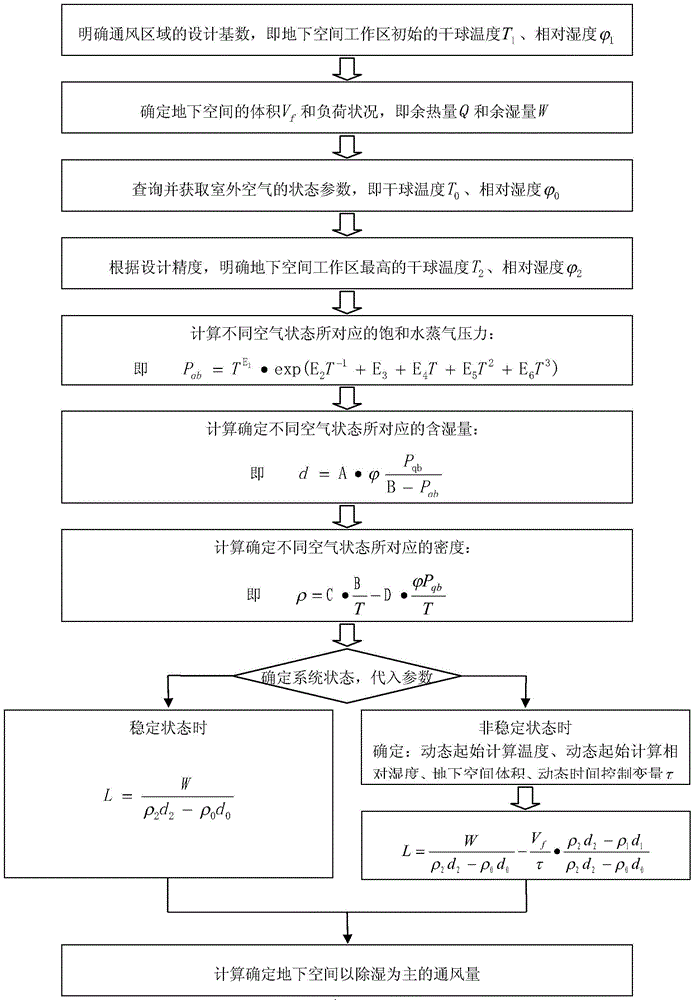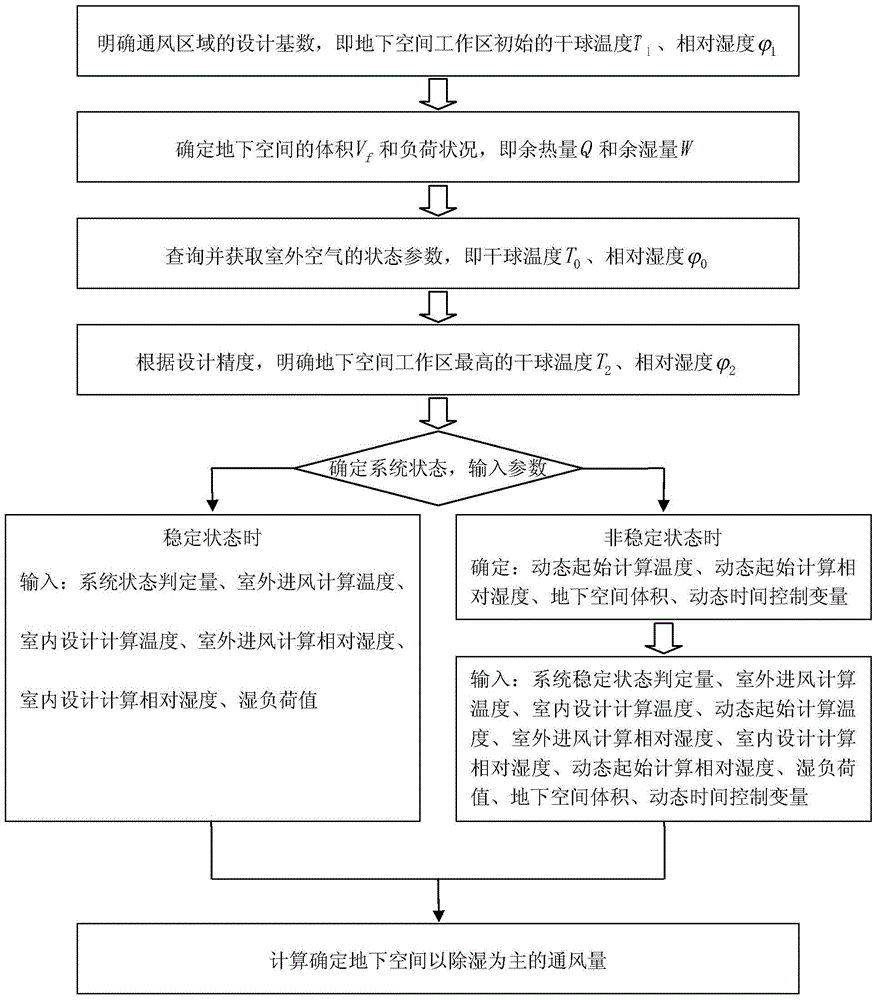A Ventilation Algorithm for Underground Space
A technology for underground space and ventilation volume, which is used in calculations, special data processing applications, instruments, etc., and can solve problems such as cumbersome, complex, and numerical errors in the calculation process.
- Summary
- Abstract
- Description
- Claims
- Application Information
AI Technical Summary
Problems solved by technology
Method used
Image
Examples
Embodiment Construction
[0031] The present invention will be further described below in conjunction with the accompanying drawings and specific embodiments.
[0032] Such as figure 1 As shown, the specific steps of the underground space ventilation algorithm are as follows:
[0033] The first step is to clarify the design basis of the ventilation system, that is, the initial dry-bulb temperature T of the corresponding building work area in the underground space, according to the complex actual building function profile of the underground space 1 ,Relative humidity and the corresponding moisture content d 1 and moist air density ρ 1 ;
[0034] The second step is to determine the volume V of the underground space by calculation f And load conditions, that is, residual heat Q and residual humidity W;
[0035] The third step is to obtain the state parameters of the outdoor air, that is, the dry bulb temperature T 0 ,Relative humidity and the corresponding moisture content d 0 and moist air den...
PUM
 Login to View More
Login to View More Abstract
Description
Claims
Application Information
 Login to View More
Login to View More - R&D Engineer
- R&D Manager
- IP Professional
- Industry Leading Data Capabilities
- Powerful AI technology
- Patent DNA Extraction
Browse by: Latest US Patents, China's latest patents, Technical Efficacy Thesaurus, Application Domain, Technology Topic, Popular Technical Reports.
© 2024 PatSnap. All rights reserved.Legal|Privacy policy|Modern Slavery Act Transparency Statement|Sitemap|About US| Contact US: help@patsnap.com










